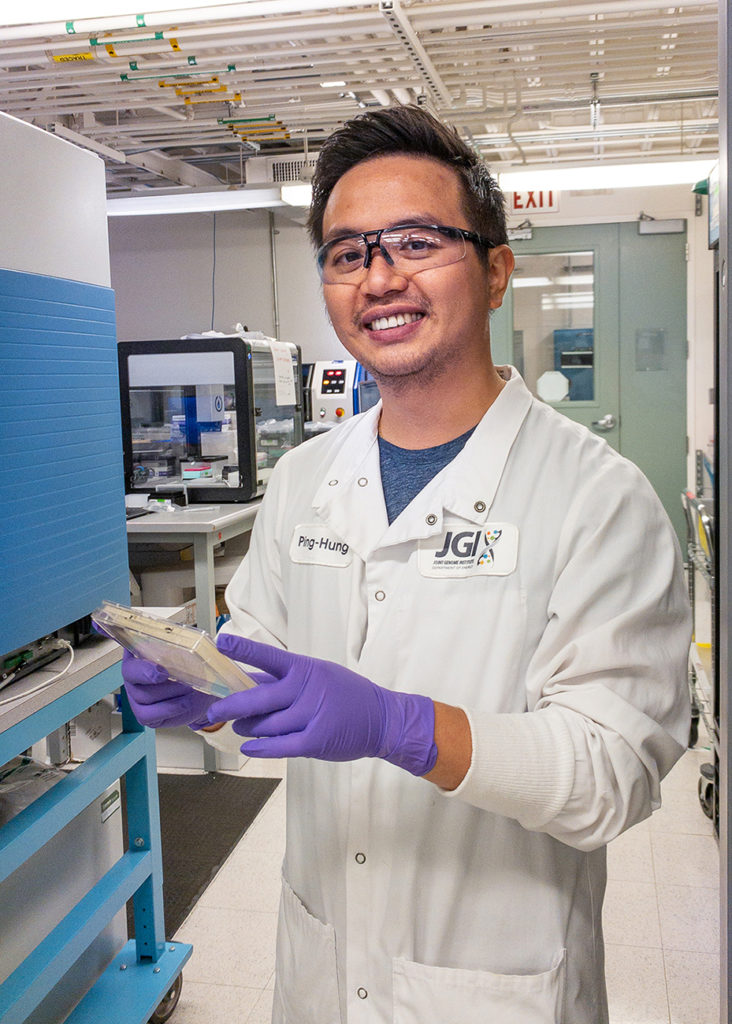From September 16-20, 2019, we introduce you to some of the postdocs at the JGI in honor of National Postdoc Appreciation Week, which recognizes the contributions of these early career researchers. Through a series of hard-hitting questions, we find out what drives each one.
What are you working on? My postdoc research in the Synthetic Biology-Pathway Engineering Group led Yasuo Yoshikuni is in collaboration with the Center for Advanced Bioenergy and Bioproducts Innovation (CABBI) to dissect the mechanisms underlying the multi-stress tolerance of a non-model industrial yeast species: Issatchenkia orientalis. We are embracing the natural variations of this species and leveraging JGI’s high throughput capacities to perform genotyping and phenotyping of them to identify the genetic variants contributing to the stress tolerance. A comprehensive understanding of the stress tolerance mechanisms of this species will provide insights into how to further improve I. orientalis strains or other fungal species for sustainable bioproduct production.
How do you think that project would change if you were working on it in the year 2330 instead of today? The analyses and experiments would be all automated by artificial intelligence and robots in the year 2330.
When did you join JGI? February 2018
Where did you join us from? University of California, Berkeley
What drives your passion outside of JGI? Playing board games, swimming, and travel.
What song do you currently have on repeat? “So Am I” – Ava Max
What is your favorite quote? “Each of these breakthroughs, while sometimes they’re momentary, sometimes over a period of a day or two, they are the culmination of, and couldn’t exist without, the many months of stumbling around in the dark that precede them” -Andrew Wiles
What is your favorite place to visit? Japan!
